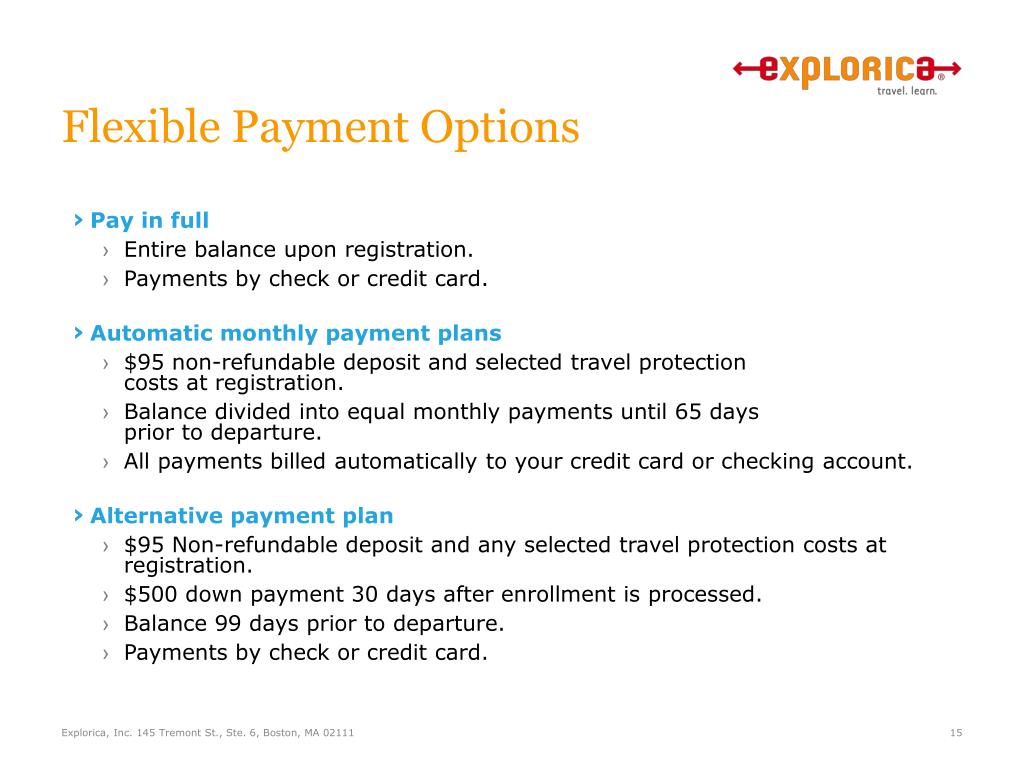This calculator will help you to compare the costs between a loan that is paid off on a bi-weekly payment basis and a loan that is paid off on a monthly basis. The bi-weekly payments are set to half of the original monthly payment, which is like paying an extra monthly payment each year to pay off the loan faster & save on interest.
If you owe the IRS an unexpected tax bill, Consumer Reports explains your payment options. The agency provides programs to help if you can't pay your taxes in full by April 15. Note: If you are registering for the CFA Program and you purchase the print version of the curriculum, it will be shipped within one to two business days after payment confirmation. Your curriculum should arrive within six to nine business days after shipment. You can also find your next day to request payment and your scheduled filing day by calling Tele-Serv at 800-558-8321, select Option 2, between 7 a.m. Weekdays or by logging on to Unemployment Benefits Services and viewing Claim and Payment Status. Please make note of the date and day and mark it on your calendar.
Bi-Weekly Loan Strategies


Credit arrangements vary, each governed by specific terms and conditions shared with individual borrowers. The way borrowed money comes to you, and the way it is subsequently paid back, depends on the type of loan you take and conditions contained in your individual debtor agreement. Interest rate, loan repayment duration, as well as other specific information contained in your loan contract influence what your payment will be at the end of each billing cycle.
Mortgages and other long-term loans require regular repayment, in installments broken down into interest and principal amounts. Over the course of five, ten, even thirty years, the money is paid back with substantial interest added. Loans are structured in a number of different ways, to be paid back at designated intervals. In addition to the impact of rates and other loan terms, the frequency with which you make payments has a significant impact on the cost of borrowing.
Interest Calculations
Lenders use a variety of criteria to determine how much interest is due on mortgages and other loans. APR is the annual percentage rate, which reflects the baseline interest attached to your loan. APR helps consumers compare credit products, giving them an equal reference point for contrasting multiple loans. Actual payments are tabulated using daily periodic rates and other figures that assign interest charges to outstanding loan balances. The number of days in the billing cycle, and the total outstanding debt are used to make calculations about each billing period's repayment obligations.
Conventional mortgages are generally structured to be paid back in 30 years, though some 20 and 15 year options exist. Since payments are usually attached to calendar months, the total number of repayments each year is 12 – one for each monthly billing period. Another option for repaying loans is to make bi-weekly payments to cover the debt. Instead of making a single payment by each month's due date, you are responsible for a payment every two weeks. Since there are 52 weeks in the year, your total number of payments when paying bi-weekly is 26, which actually includes more payments than a monthly schedule. As a result, borrowers repaying bi-weekly make a full extra contribution to their mortgage repayment each year, which gets applied directly to the principal balance of the loan.

Managing Bi-Weekly Payments
Option 2 June 1st Payment Billdesk
There are a couple ways to pursue bi-weekly payment strategies. In each case, bi-weekly loan calculator helps illustrate the amount of money you might save by going to a bi-weekly approach.
Option 2 June 1st Payment Dates

The way loans are set-up, payments made above and beyond required amounts are often applied directly to the outstanding principal balance carried. One way to shorten the payback period for a mortgage, for example, is to make additional contributions beyond the contracted amount. By paying bi-weekly, borrowers stand to save thousands on interest payments, shortening their repayment periods at the same time.
Option 2 June 1st Payments
Bi-weekly payment can either be managed by your lender, in a formally structured plan; or self-administered by making voluntary extra payments each month. There are usually no penalties incurred for paying ahead independently. In fact, self-managed plans are sometimes more effective than bi-weekly bank plans.

